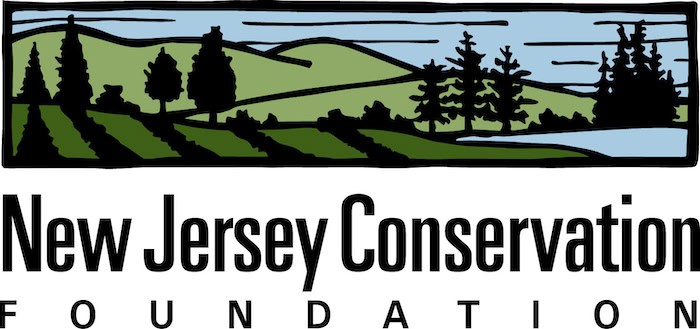By Alison Mitchell
Spring is just a few weeks away and there is a lot to look forward to; longer and warmer days, flowers blooming, the first green leaves emerging on trees and the songs of returning birds.
If you are among those who can’t wait to get back to your yard or garden, you are probably already thinking about what to plant this year. You may be poring over seed and nursery catalogs, or eagerly anticipating a trip to your local garden center.
Many of us choose plants for aesthetic reasons; we like their color or shape or the way they smell. But the plants that catch our eye in garden centers are not always those that support healthy ecosystems for creatures, including birds, bees, butterflies and other wildlife.
Many garden centers are filled with flowers, shrubs and trees native to other continents. At best, these “exotic” plants are like an empty pantry, providing little to sustain wildlife. At worst, they may be invasive and spread aggressively throughout the landscape, pushing out beneficial native plants.
This year, why not do wildlife a favor and “go native” in your yard and garden?
What exactly is a native plant? Natives are those that occur naturally, without human introduction, in a specific location. Only plants found in New Jersey before European settlement are considered to be native to this state we’re in. The Native Plant Society of New Jersey has identified more than 2,000 native plant species.
The advantage of native plants is that they are well adapted to local climate and soils, which makes them generally heartier than non-natives.
When planted in the right place, natives flourish with minimal care. Once established, they grow well with normal rainfall and need little, if any, additional watering. They also don’t need fertilizers or pesticides, which protects water resources from contamination.
If you think native plants are not as pretty and colorful as exotics, think again. The Garden State has a wide variety of native flowers, shrubs and trees that look gorgeous and provide food and shelter for wildlife.
Cardinal flower, Eastern columbine, bee balm, orange butterfly weed, purple coneflower, black-eyed Susan, wild geranium, rose mallow, Virginia bluebells and New England aster are only a few of the showy native wildflowers that look fantastic and attract pollinators.
So where do you start? First, find out which plants are native to your specific location, since soil and climate can make a big difference.
Then figure out how much grassy lawn you really need. Replacing portions of lawn with native plantings can be of great benefit. In addition to providing food and shelter for wildlife, you will spend less time mowing and watering, and can ditch the harmful pesticides and fertilizers.
There are plenty of online resources to help you decide what natives to plant, and where. One good one is the New Jersey Yards website at www.jerseyyards.org
New Jersey Yards features an extensive database of New Jersey native plants and “Jersey friendly” non-natives that don’t spread. The search function allows people to filter for various criteria, including region, soil type, light requirements, bloom time, deer resistance and type of wildlife that will be attracted. So whether you have a sunny yard in the Pine Barrens or a shady spot in the Highlands, you will be able to choose plants that will thrive.
One caveat: When buying native plants, check with the garden center to make sure they are not grown using seeds or soils treated with neonicotinoid pesticides. If treated with “neonics,” they will kill the insect pollinators that are supposed to benefit from their presence.
Another good bet is visiting native plant sales sponsored by conservation groups with a stake in offering quality plants.
In northern New Jersey, check out the Great Swamp Watershed Association sale at www.greatswamp.org/native-plant-sale/
In southern New Jersey, learn about the Pinelands Preservation Alliance sale at https://pinelandsalliance.org/explore-the-pinelands/pinelands-events-and-programs/spring-native-plant-sales/
To learn what plants to avoid, see the “Do Not Plant” list on the New Jersey Invasive Species Strike Team website at https://www.fohvos.info/invasive-species-strike-team/info-center/
The Native Plant Society of New Jersey is another great resource. The society will hold its annual spring conference on March 5 and the virtual event is free to all. Speakers include:
• Dr. Douglas Tallamy, professor at the University of Delaware, who will speak about the complex and fascinating web of wildlife sustained by oak trees;
• Dr. Jay Kelly, professor at Raritan Valley Community College, who will discuss how overabundant deer and invasive plant species are profoundly altering the characteristics of forests in central and northern New Jersey;
• Don Torino, president of the Bergen County chapter of the National Audubon Society, who will talk about how to make your backyard a habitat for migrating birds and pollinators;
• Rebecca McMackin, director of horticulture at Brooklyn Bridge Park, who will speak about strategies employed to design an ecological park, and techniques to cultivate biodiverse parkland.
To register or learn more, go to the Native Plant Society of New Jersey website at https://npsnj.org. The website also features a guide to the state’s native plants.
Going native is a win-win; you will end up with a healthier environment and less yard work!
Alison Mitchell is a co-executive director of the New Jersey Conservation Foundation, Far Hills. She may be reached at [email protected]

